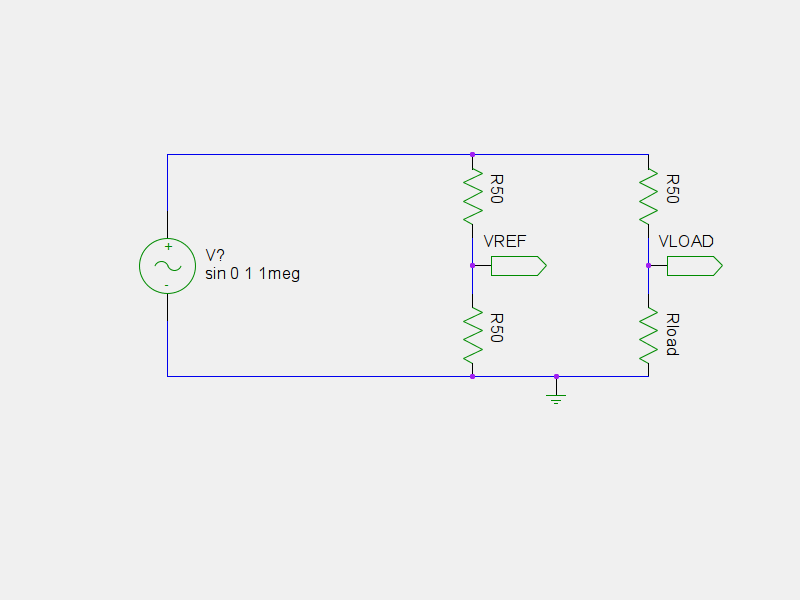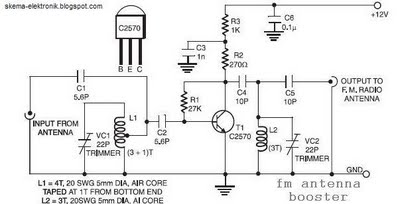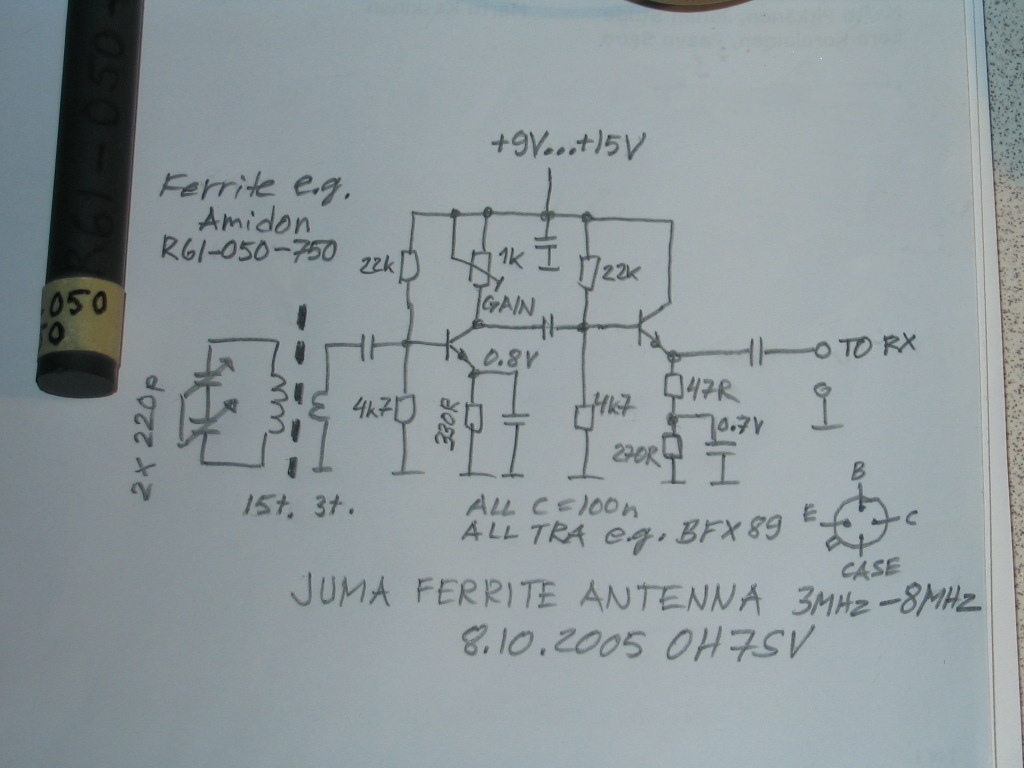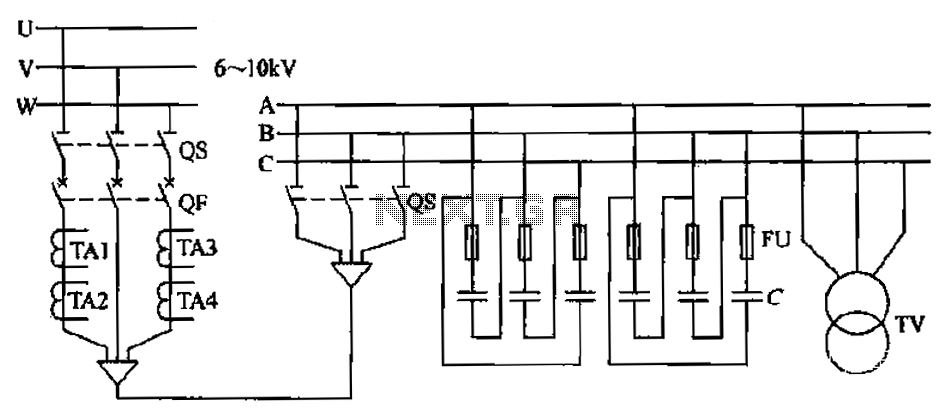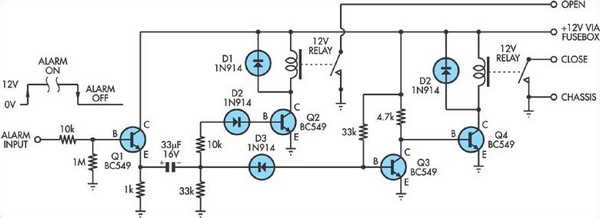
Central heating pipe antenna for SW
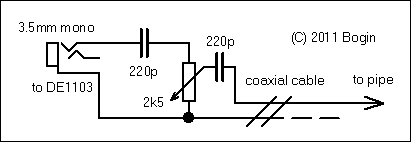
If residing in a flat with steel central heating pipes and lacking the option to install an external antenna due to thermal insulation, this indoor shortwave antenna may be the optimal choice for portable world band radios in terms of signal and noise strength. This situation often arises when modern electronics utilizing switched-mode power supplies are present. However, when paired with a simple attenuating circuit, this antenna configuration outperforms any indoor long-wire or random-wire setups. This indoor device has been utilized with the Degen DE1103 for casual shortwave number or oddity station hunting, yielding impressive results. Positioned in central Europe within an apartment block, it has successfully received signals from Cuba, Libya, Vietnam, and Bangkok, among other stations.
The circuit presented is a straightforward example of a receiver antenna attenuator. It is advised to use short connections for the input jack. The potentiometer should be used in conjunction with the internal attenuation circuitry of the world band radio to avoid overloading. If excessive noise or station bleed occurs during reception, increasing the resistance between the antenna jack and coaxial cable is recommended. The center conductor of the coaxial cable should be connected directly to an exposed section of the heating pipes, ensuring that the section is free of paint or lacquer. The shielding should only connect to the negative terminal of the receiver. It is crucial to avoid using this antenna with any receiver that is grounded, as the steel heating pipes are electrically connected to ground. This restriction means that the antenna is suitable for portable, battery-operated world band radios.
The rationale behind this limitation is that connecting the setup to a desktop receiver or an SDR powered by mains electricity may lead to improper operation or significant interference (QRM). This is akin to shorting the antenna jack directly to the mains ground. Conversely, this setup is advantageous for battery-powered radios, as the ground serves as a zero-volt potential, functioning like a lightning conductor and protecting the input stage from static or electrical charges. For those with a desktop receiver or any device connected to mains ground interested in this setup, a ferrite antenna can be constructed using suitable ferrite cores with the central heating pipes at the center. Alternatively, winding 10-15 turns around the pipes can be attempted, although this may introduce interference from nearby objects unless appropriately shielded.
This configuration represents a practical solution for enhancing shortwave reception in environments where traditional antenna installations are not feasible. The careful consideration of grounding and shielding is essential to optimize performance and minimize interference.If you happen to live in a flat with steel central heater pipes and you don`t have the option to make yourself an external antenna, due to e. g. thermal insulation, this might probably be the best indoor shortwave antenna for portable world band radios; when it comes to signal (or noise) strength.
The latter happens in unfortunate cases, when there are just many switched mode-based modern electronics around. However, along with a simple attenuating circuit, it beats any indoor long- or random-wire setup. I use this indoor gizmo on my Degen DE1103 for casual shortwave number or oddity stations hunting; and the results were spectacular: positioned in central Europe in a block of flats, I have managed to catch Cuba, Libya, Vietnam or even Bangkok with this setup, besides other stations. So, here`s how! As you can see, this circuit is the simplest example of an RX antenna attenuator. For the input jack, use as short connections as possible. Use the potentiometer in combination with the internal attenuation circuitry of your world band radio to prevent overloading.
Thus, if there`s too much noise in your reception, or stations bleeding through , increase resistance between the antenna jack and coaxial. Then, connect the center conductor of your coaxial directly to any uncovered part of your pipes (find one with no paint/lacquer), and it`s done.
Shielding is connected only to the negative pole of your receiver, please see the note below. Do not try to use this antenna on any receiver which is connected to ground. Or, in other words, this antenna can be used for portable, battery-powered world band radios, as mentioned above. Why this limitation Technically, steel central heating pipes are directly connected to ground, both literally and electrically.
Thus, if you try to connect this setup to a desktop receiver, or to an SDR powered by a computer running on mains, it might not work properly, or it will introduce a lot of QRM (interference). It would be like shorting your antenna jack directly to mains ground. On the other hand, this is actually a big advantage for battery powered radios; since ground acts as a zero volt potential like a lightning conductor, this setup will also protect your input stage from any static or electrical charges.
If you own a desktop receiver (or any other connected to mains ground in general) and you are still interested in this setup, you will need to make a ferrite antenna out of some suitable ferrite cores, with the central heating pipes in center, like this. Or, try directly winding some 10-15 turns on the pipes. However, you might introduce interference from anything which is near this coil , unless you shield it someway.
🔗 External reference
The circuit presented is a straightforward example of a receiver antenna attenuator. It is advised to use short connections for the input jack. The potentiometer should be used in conjunction with the internal attenuation circuitry of the world band radio to avoid overloading. If excessive noise or station bleed occurs during reception, increasing the resistance between the antenna jack and coaxial cable is recommended. The center conductor of the coaxial cable should be connected directly to an exposed section of the heating pipes, ensuring that the section is free of paint or lacquer. The shielding should only connect to the negative terminal of the receiver. It is crucial to avoid using this antenna with any receiver that is grounded, as the steel heating pipes are electrically connected to ground. This restriction means that the antenna is suitable for portable, battery-operated world band radios.
The rationale behind this limitation is that connecting the setup to a desktop receiver or an SDR powered by mains electricity may lead to improper operation or significant interference (QRM). This is akin to shorting the antenna jack directly to the mains ground. Conversely, this setup is advantageous for battery-powered radios, as the ground serves as a zero-volt potential, functioning like a lightning conductor and protecting the input stage from static or electrical charges. For those with a desktop receiver or any device connected to mains ground interested in this setup, a ferrite antenna can be constructed using suitable ferrite cores with the central heating pipes at the center. Alternatively, winding 10-15 turns around the pipes can be attempted, although this may introduce interference from nearby objects unless appropriately shielded.
This configuration represents a practical solution for enhancing shortwave reception in environments where traditional antenna installations are not feasible. The careful consideration of grounding and shielding is essential to optimize performance and minimize interference.If you happen to live in a flat with steel central heater pipes and you don`t have the option to make yourself an external antenna, due to e. g. thermal insulation, this might probably be the best indoor shortwave antenna for portable world band radios; when it comes to signal (or noise) strength.
The latter happens in unfortunate cases, when there are just many switched mode-based modern electronics around. However, along with a simple attenuating circuit, it beats any indoor long- or random-wire setup. I use this indoor gizmo on my Degen DE1103 for casual shortwave number or oddity stations hunting; and the results were spectacular: positioned in central Europe in a block of flats, I have managed to catch Cuba, Libya, Vietnam or even Bangkok with this setup, besides other stations. So, here`s how! As you can see, this circuit is the simplest example of an RX antenna attenuator. For the input jack, use as short connections as possible. Use the potentiometer in combination with the internal attenuation circuitry of your world band radio to prevent overloading.
Thus, if there`s too much noise in your reception, or stations bleeding through , increase resistance between the antenna jack and coaxial. Then, connect the center conductor of your coaxial directly to any uncovered part of your pipes (find one with no paint/lacquer), and it`s done.
Shielding is connected only to the negative pole of your receiver, please see the note below. Do not try to use this antenna on any receiver which is connected to ground. Or, in other words, this antenna can be used for portable, battery-powered world band radios, as mentioned above. Why this limitation Technically, steel central heating pipes are directly connected to ground, both literally and electrically.
Thus, if you try to connect this setup to a desktop receiver, or to an SDR powered by a computer running on mains, it might not work properly, or it will introduce a lot of QRM (interference). It would be like shorting your antenna jack directly to mains ground. On the other hand, this is actually a big advantage for battery powered radios; since ground acts as a zero volt potential like a lightning conductor, this setup will also protect your input stage from any static or electrical charges.
If you own a desktop receiver (or any other connected to mains ground in general) and you are still interested in this setup, you will need to make a ferrite antenna out of some suitable ferrite cores, with the central heating pipes in center, like this. Or, try directly winding some 10-15 turns on the pipes. However, you might introduce interference from anything which is near this coil , unless you shield it someway.
🔗 External reference
